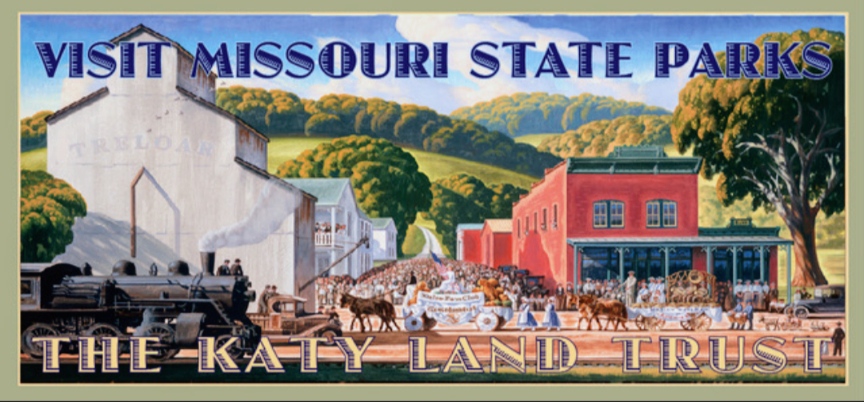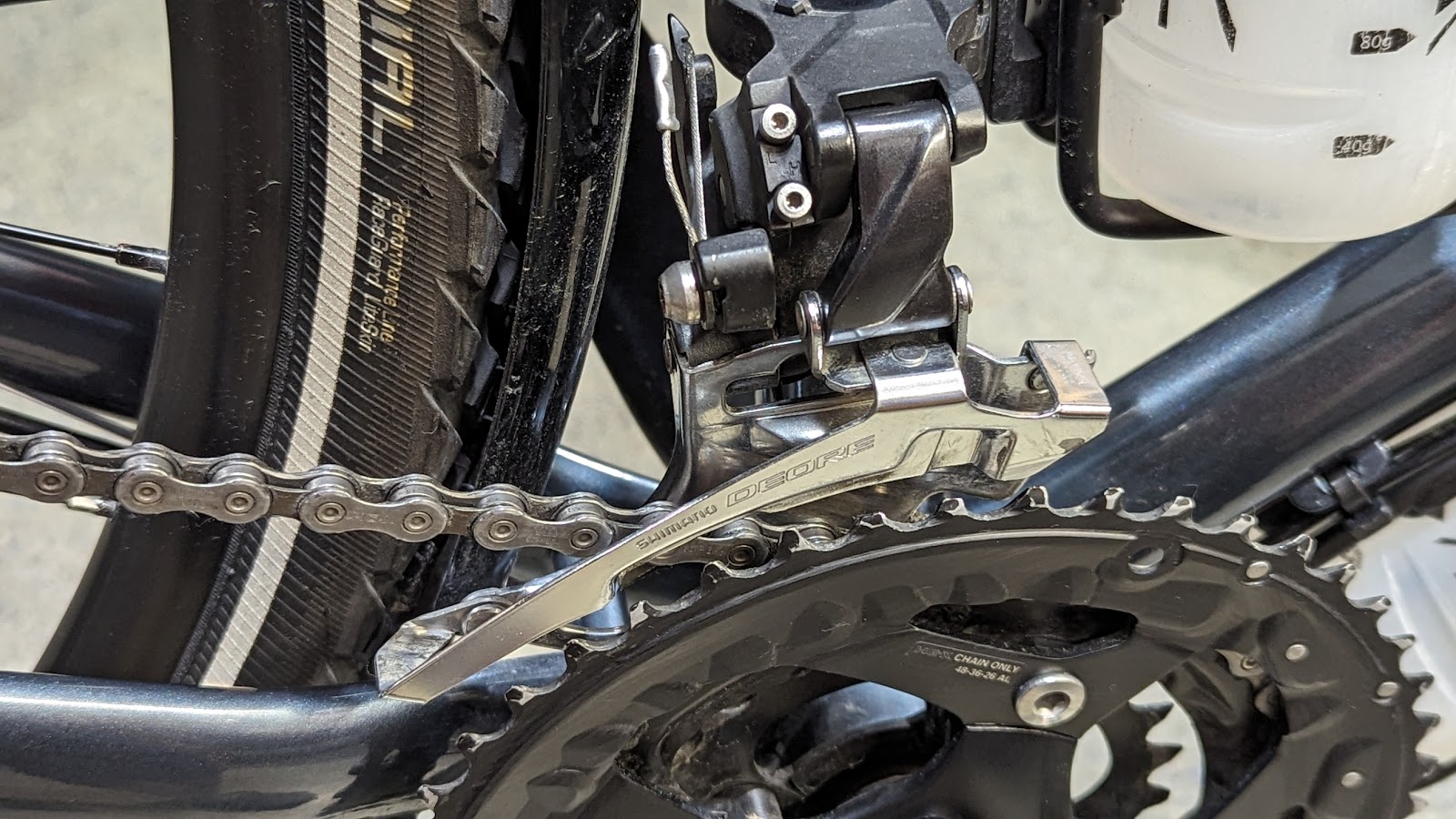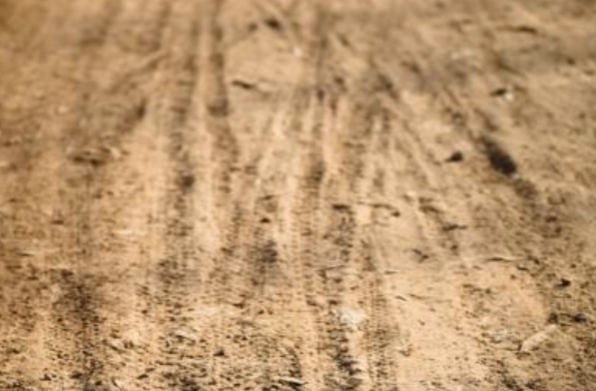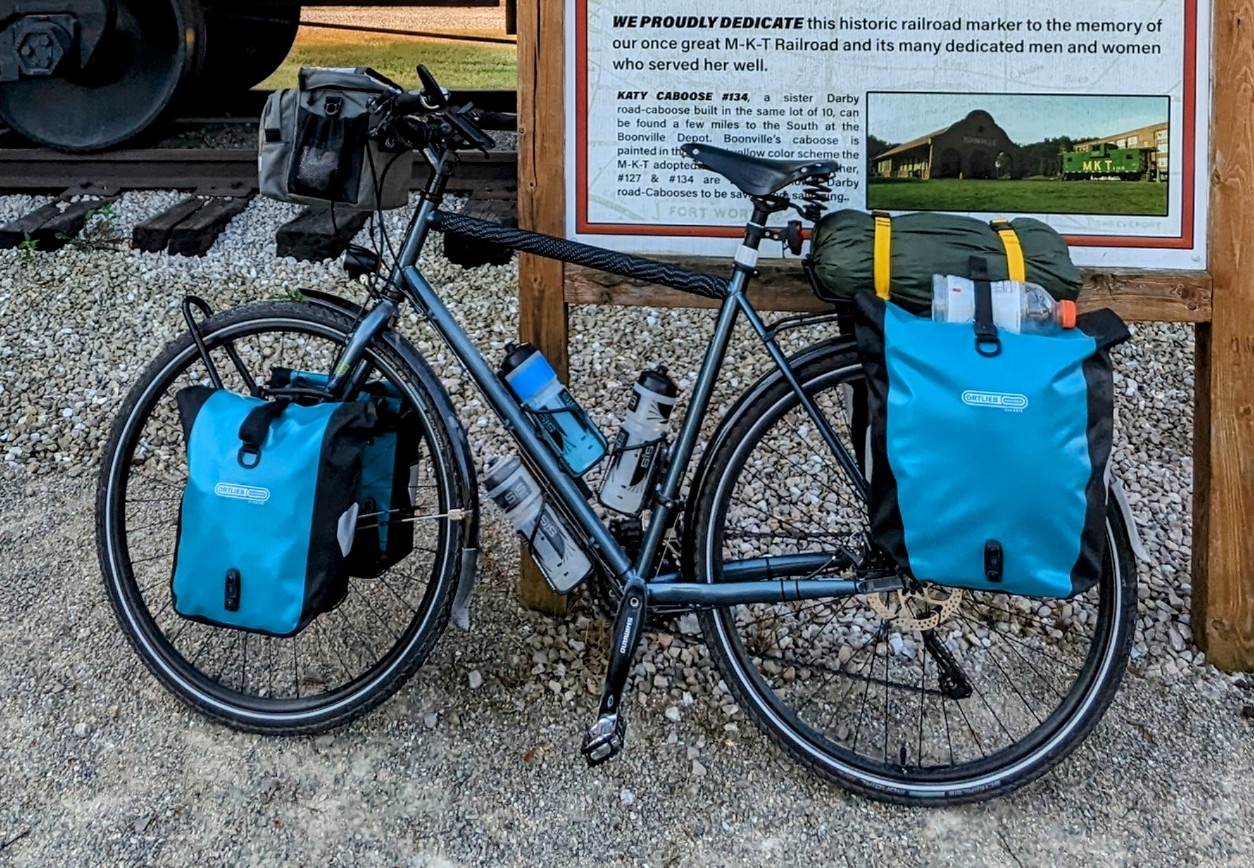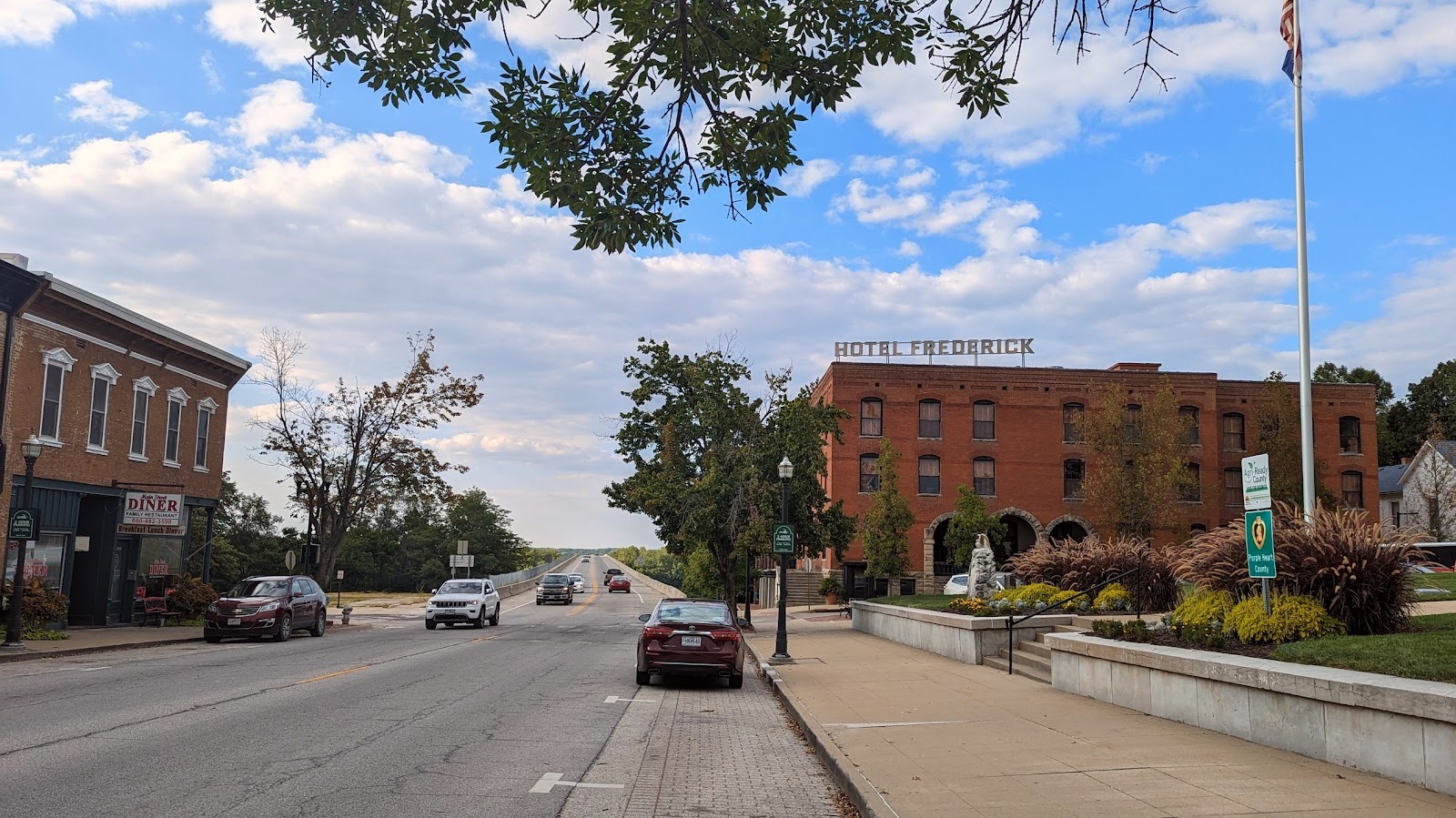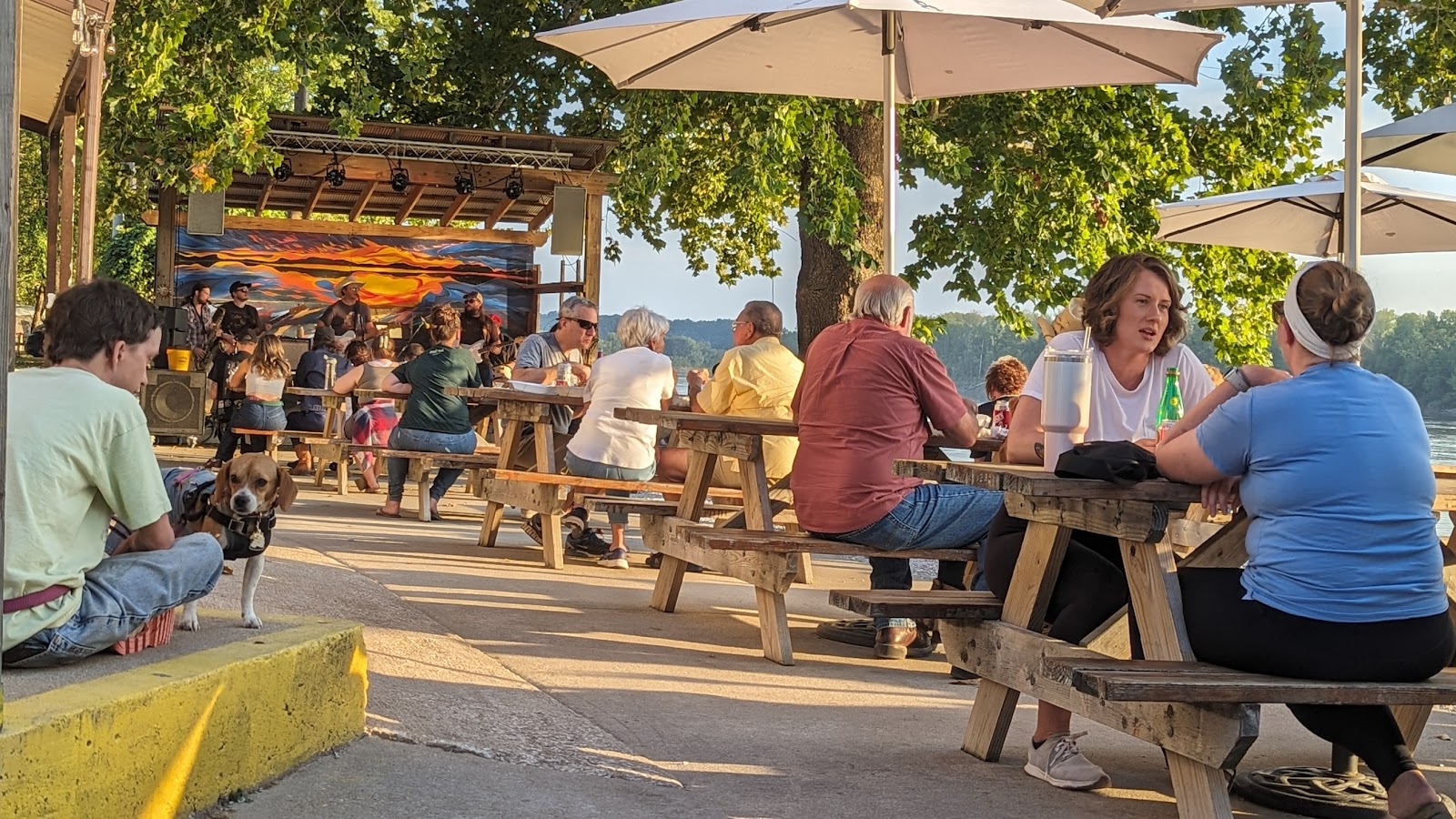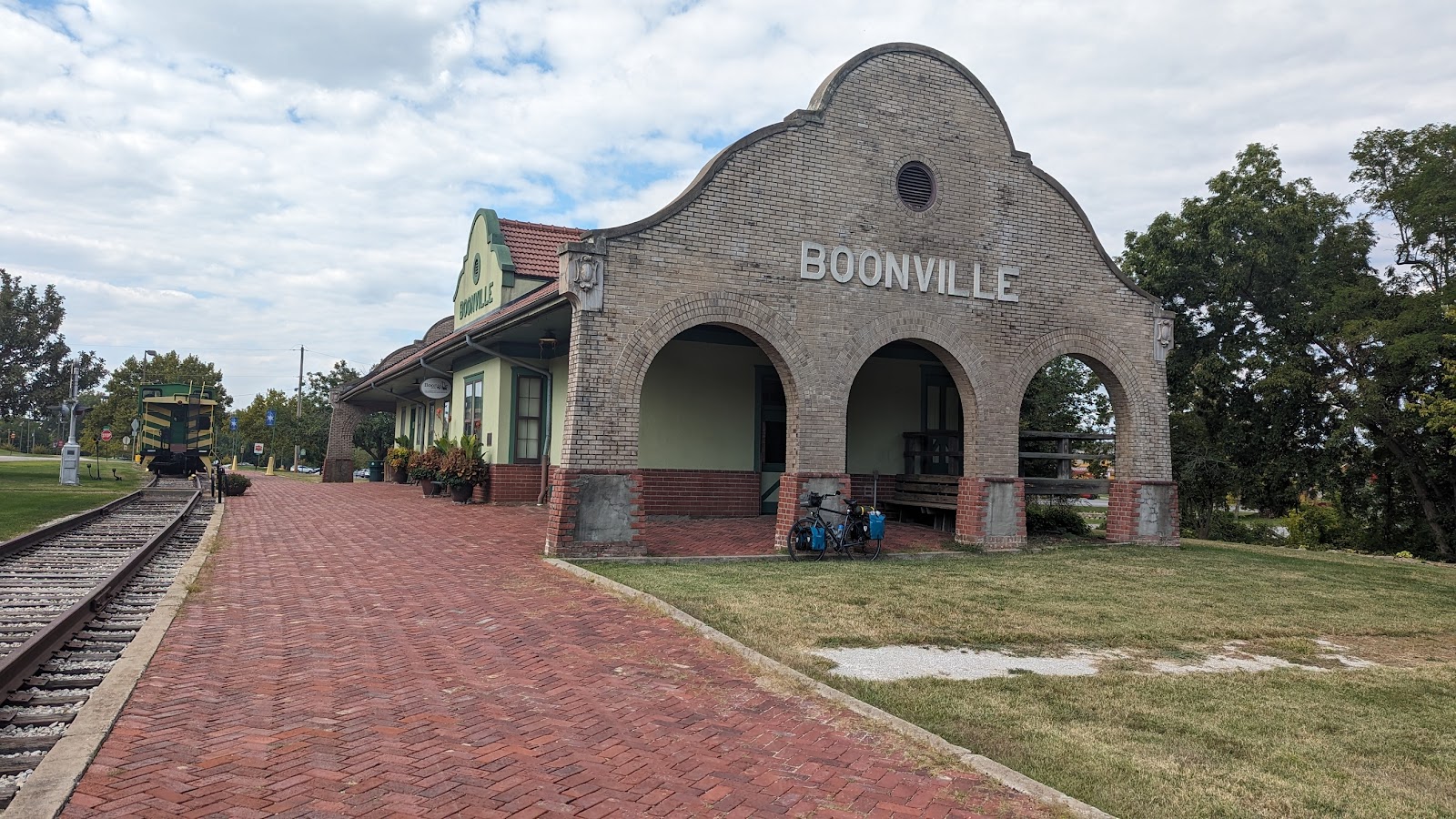The trail is really one of the treasures for rail to trail projects in the United States. No wonder it is on bucket lists for cyclist from all around our country and the world.
The Katy Trail is very easy to ride in terms of grade due to it using an abandoned railway right of way and being basically flat.
The Katy has nothing greater than a 2% grade the entire length. With that said, the crush rock trail has more rolling resistance than pavement would. When riding this type of trail your speed will likely be 20% slower than on pavement. Plan to take away more speed as your total bike weight increases too. The surface when dry can be quite dusty and I cleaned and lubricated my drivetrain three times on the trip.
As for what bike to use, the answer is what ever you have as long as the bike fits well and you can carry clothing and a credit card. If you're planning to camp, something with more capacity will work fine. I helped a gal that was riding a $250 Trek hybrid bike with a garbage bag strapped to the back. I'm sure she finished the trail on it, no problem.
In my case, the Kona Sutra SE was a real thoroughbred for this type of trip.
The bike is made to carry a load and actually rides better fully laden than it does bare. It has rock solid stability, control & comfort. Further, when loaded the steel frame exhibits more of the springy ride that steel frames provide. Finally with the way the bike fits and the characteristics of the Brooks leather saddle, I was never once sore at the end of the day. The Sutra is the perfect bike for me to travel on.
About any tire will work on this trip but a tire width of 32mm wide or greater is better. My Kona Sutra is fitted with 40mm wide tires and they worked beautifully. They rolled well and the width was enough to provide some suspension and vibration damping.
For tire pressure on most of the trail I ran 50psi in the front tire and 60psi in the rear tire on my fully loaded touring bike. For reference; the bike weight is about 30lbs, the handlebar bag about 6lbs, full water bottles (3) 5.5lbs, the loaded front panniers about 22lbs, the rear panniers 20lbs, the tent on the rear rack 3.5lbs, and the rider 190lbs. I rode in the rain one day and lowered the tire pressures about 10% to float on the softer surface a bit better. I also added a bit of air each morning before setting out to replace lost pressure. I ran across a few riders that had experienced flat tires. I didn't have any flats and that is probably due to several points; heads up riding and avoiding running over sticks or twigs (thorns) on the trail. I also avoided hitting the edges of bridge decking where it was significantly higher than the trail. And finally, quality tires and appropriate tire pressures. The tires I use are Schwalbe Marathon Mondials. These tires incorporate a kevlar puncture resistant belt and heavy-duty, durable construction. They are expensive at $55-60 per tire (plus buying tubes) but in my opinion are worth it for durability and 6000mi longevity. Heck I remember 45 years ago not paying that much for tires for my VW Beetle.
I found that to enjoy the country I was riding through averaging 35 miles per day was about right. It provided plenty of time to take in the scenery, history, towns and people along the way.
My first full day on trail was about 48 miles and I found myself focused on the destination rather than where I was. I thought, "if that's the way I'm going to travel I might as well drive". From that point on I altered my plan to ride less and enjoy more.
Another issue that first day on trail was riding more like I would at home rather than what is more appropriate for a tour. At home I tend to ride faster and harder. Pushing forward in whatever gear I'm in rather than using the drivetrain efficiently. I needed to regain my touring tempo! To make miles and still feel relatively fresh at the end of the day I find that spinning at a steady 60 pedal strokes per minute and using the gears on the bike to maintain that is very effective for me. I knew this from touring in the 1980s-90s but had to work to get back into a touring rhythm. The idea is to maintain spins with the 30 gears I had available rather than muscle power.
My camp set up worked just as I expected it would. I've camped for many years and have many different ways I can set up a camp. There isn't a thing I would change in my set-up except maybe leaving the chair at home. The kit packed well, was comfortable and had good weather protection.
The same could be said about my clothing selection. However I might opt for a second pair of shorts rather than taking a pair of convertible pants.
My strategy for food while traveling is to generally have breakfast and dinner in camp. If staying in a hotel I will usually try to find a local diner for breakfast and a tavern for dinner. My lunches are usually eaten in local places and are my largest meal of the day. The pantry on the bike begins a trip with three days of food. My own oatmeal mix for breakfast. Tortillas, peanut butter & Nutella for lunches. Ramen with a small tin or packet of meat for each dinner. Snacks are mostly M&M peanut and hydration mix. My objectives with food are compactness, balanced nutrition, hydration, ease of preparation, low cost, and finally provisions that can be bought at any grocery store.
My tool kit may be a bit overkill but the area I was riding through was unknown and I prefer to be able to take care of my own maintenance and repair.
With that said, I'd carry at least a tire repair kit, and a way to clean and lube your chain. Remember however that they are worthless if you don't know how to do both beforehand.
One last item or kit that I carried was a 1st Aid Kit. It fits in a 1-Liter dry sack and one I assembled myself. It has the usual items for small cuts and the like but is more focused on the kinds of injuries one is likely to experience on a bicycle. Large scrapes, gouges and aches and pains are accounted for in the kit. Thankfully, I did not need to do 1st Aid. Even at that I plan to leave the kit as is because I believe it to be appropriate for taking care of potential injuries.
I went over my packing list and only had a couple of items in the entire kit to subtract or add. It was nearly perfect.
Was it worth doing? Absolutely! Would I do it again? Maybe if I used the Rock Island Spur rather than the start at Clinton MO because I haven't done the Rock Island. I've got a pretty good list of other places to ride before doing one over.
Would I recommend it to other people? I already have!
Why?
- The trail is described as a premier cycling destination, and it is. I ran into people from New York, California, Texas, Illinois, Utah, Germany, Scotland and Brazil.
- The people riding the trail and the people I met from Missouri are wonderful. Friendly, helpful, fun, informative, interested, interesting, and positive. I had really pleasant and interesting conversations with riders and locals.
I would start conversations by asking people that were walking if they were local. If they answered yes, I would thank them and the people of Missouri for the trail. Then their pride would lead them to give history lessons, guided walks or suggestions, expressions of their own love of the trail and tens of other topics. It really added to this trip.
- There is a lot to do along the trail besides riding. Relaxing, site seeing, history, wineries, breweries, tours, restaurants, entrepreneurial quaint towns, wildlife, river views, prairies, B&Bs, Hotels, Camping, and much more.
- It's easy to make arrangements with numerous shuttle services to get to the end of the trail you want to start or end at. I used the Bike Stop Cafe in St. Charles and they run a good operation.
Looking at the Adventure Cycling Association Route Map my next decision is where to ride next. I prefer trail rather than road riding but am willing to do either with the right route. There are a few trails on the east coast that are at the top of my list. The Erie Canal Trail, The Ohio to Erie Trail, and The GAP + C&O Trails?
Thanks for joining me on this little ride. I'll blog about my next adventure once I decide where it will be.


